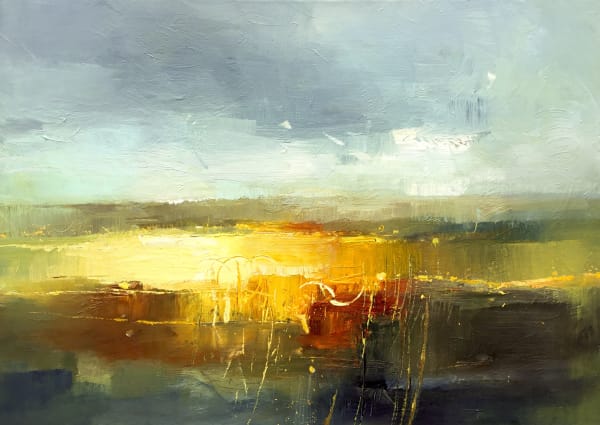I am drawn to the combination of non-figurative form and colour to set off a series of juxtaposing ideas in the viewer's mind - tranquility/ elegance, power/sadness, rest/conflict, a sense of movement… all these things triggering human emotions of some kind.
Patricia Volk was recently made a Fellow of the Royal Society of Sculptors, confirming her position as an outstanding visual artist working in painted fired clay.
Now, her sculptures - strikingly colourful forms - grace the collections of the likes of best-selling author Anthony Horowitz, former BAFTA chairman Simon Relph CBE, Lord Carrington and the television presenter Mary Portas. She has also been distinguished by having her work chosen as a Southern Arts Prize, and been exhibited in solo and mixed exhibitions all over the UK as well as abroad.
Born in Belfast, Volk studied art at Middlesex Polytechnic and Bath. As a child she'd always dreamt of going to art school, but considered the possibility totally remote for people like her, not only having extreme dyslexia, but in a school where the very idea of studying art was laughed at. She nevertheless came to England with the idea getting in somewhere to train in art, but as a one parent family, her main preoccupation was getting enough money to live on. Then, one night after not painting or drawing for fifteen years, she lifted up a pencil and started to draw. After building up a portfolio and applying to Art College, she got in as a mature student in her thirties, which she says was the most exciting time of her life, though, ultimately, she felt like a square peg in a round hole. It was only in setting up her own studio on the border of Wiltshire and Somerset did she find her unique voice and begin to thrive.
Having been brought up in Northern Ireland surrounded by Catholic imagery (though from a Protestant background), such cultural influences provided the springboard for her interest in making what she called modern icons. Pieces that reflect on religious and mythic archetypes.
At this time, being obsessed by creating an ongoing series of sculptural heads, she learned to let the material dictate, to a large extent, and became fascinated by the fact that a difference of a millimetre can make a huge change to the emotional impact and the elegance of a piece.
She then took the bold step, after ten years, of abandoning any figurative or representational element and focusing on "pure form".
-

Winter Exhibition / Arddangosfa Gaeaf
28 Nov 2025 - 25 Jan 2026This is our second Annual Winter Exhibition at Celf Gallery and celebrates our second anniversary. The constantly changing show of new work by our gallery artists, includes work by Philip...Read more -

Summer Exhibition / Arddangosfa Haf
Mixed show by our gallery artists / Sioe gymysg gan artistiaid yr oriel 19 Jul - 17 Aug 2025Celf is pleased to announce our second annual Summer Show. The constantly changing exhibition will highlight work by our gallery artists, including Shani Rhys James, Mary Lloyd Jones, Kevin Sinnott,...Read more -

Easter Exhibition / Arddangosfa Pasg
Mixed show by all our Artists / Sioe gymysg gan ein holl Artistiaid 11 Apr - 4 May 2025Celf Gallery is pleased to announce our annual Easter Show. The exhibition will highlight work by our gallery artists, including; Shani Rhys James MBE, Kevin Sinnott, Mary Lloyd Jones, John...Read more




















